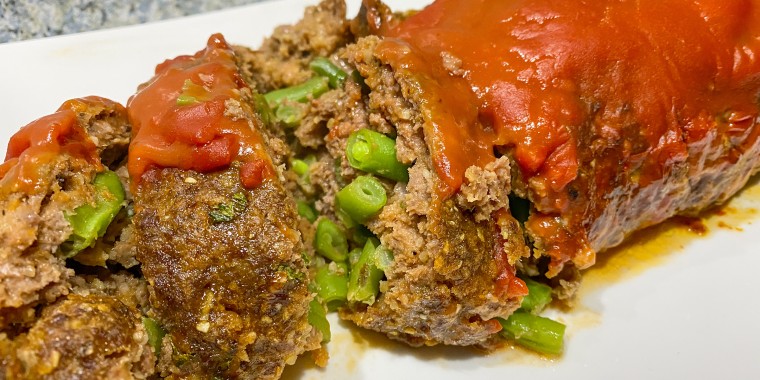Babys Head Recipe
Babys head recipe – Baby’s head recipe might sound shocking, but it’s a term that has been used for centuries to describe a variety of dishes across different cultures. This seemingly strange culinary tradition is steeped in history, symbolism, and cultural significance. From ancient times to modern adaptations, the “baby’s head” recipe has evolved alongside societal norms and culinary practices, reflecting a fascinating interplay between food, culture, and history.
This intriguing topic delves into the origins of these recipes, exploring their historical context and cultural significance. We’ll uncover the culinary techniques and ingredients that define these dishes, analyze their symbolic meaning, and examine their evolution over time. We’ll also discuss the ethical considerations surrounding the use of such terminology and explore the potential for modern interpretations to be more inclusive and respectful of cultural sensitivities.
The Origin and History of “Baby’s Head” Recipes: Babys Head Recipe

The term “Baby’s Head” might sound unsettling in modern culinary contexts, but it has a long and fascinating history, rooted in cultural traditions and evolving culinary practices. These recipes, often featuring dishes shaped to resemble a baby’s head, have been found in various cultures around the world, each with its own unique symbolism and culinary significance.
Understanding the historical context and cultural significance of these recipes allows us to appreciate their evolution and appreciate their diverse meanings.
Historical Context and Cultural Significance

The origins of “Baby’s Head” recipes can be traced back to ancient times, where food often played a significant role in rituals, celebrations, and social gatherings. In many cultures, food was not merely sustenance but also a symbolic representation of life, fertility, and abundance.
For example, in ancient Rome, the head of a pig was often served as a delicacy, symbolizing good fortune and prosperity.
- Ancient Rome:The head of a pig, known as “caput porcinum,” was considered a delicacy and often served as a symbol of good fortune and prosperity during feasts and celebrations. This practice reflected the importance of pigs in Roman agriculture and their association with abundance.
- Medieval Europe:During the Middle Ages, “Baby’s Head” recipes, often featuring dishes made with pig’s head or other animal heads, were common in Europe. These recipes were often associated with festive occasions and were seen as a symbol of abundance and hospitality.
The practice of serving animal heads, especially the pig’s head, continued in Europe for centuries.
- Asia:In various Asian cultures, “Baby’s Head” recipes have also been documented. For instance, in Chinese cuisine, a dish called “Lion’s Head” (獅子頭) resembles a lion’s head and is often served during special occasions. This dish is made with minced pork and symbolizes good luck and prosperity.
Culinary Techniques and Ingredients
The preparation of “Baby’s Head” dishes typically involves a combination of traditional culinary techniques and specific ingredients that vary depending on the region and culture. While the exact methods and ingredients may differ, certain commonalities exist, highlighting the shared culinary traditions and influences across cultures.
- Animal Heads:The most common ingredient in “Baby’s Head” recipes is the head of an animal, typically a pig, sheep, or goat. These heads are often boiled, roasted, or braised to tenderize the meat and extract the flavorful broth.
- Stuffing and Seasoning:The animal heads are often stuffed with various ingredients, such as herbs, spices, vegetables, and grains. These fillings add flavor and texture to the dish and enhance its overall culinary appeal.
- Broth and Sauces:The broth resulting from boiling or braising the animal heads is often used to create flavorful sauces and gravies. These sauces can be thickened with flour or cornstarch and seasoned with various herbs and spices to complement the flavors of the dish.
Symbolic Meaning and Cultural Impact

“Baby’s Head” recipes often hold deeper symbolic meanings and play a significant role in cultural traditions. These meanings can be interpreted in various ways, reflecting the diverse beliefs and practices of different cultures. Understanding these symbolic meanings is crucial for appreciating the cultural context and significance of these recipes.
- Fertility and Abundance:In many cultures, the head of an animal, particularly a pig, is associated with fertility and abundance. This symbolism stems from the pig’s prolific breeding and its association with prosperity and good fortune. Serving a “Baby’s Head” dish during celebrations and festivals reinforces these positive connotations.
- Life Cycle and Rebirth:The head of an animal, representing the source of life and vitality, can also symbolize the cycle of life and rebirth. This interpretation suggests that consuming a “Baby’s Head” dish is a way of acknowledging the cycle of life and death and celebrating the renewal of life.
- Hospitality and Sharing:Sharing a “Baby’s Head” dish can also be a way of expressing hospitality and generosity. In many cultures, offering food to guests is a sign of respect and welcome, and the shared consumption of a symbolic dish like a “Baby’s Head” strengthens social bonds and reinforces communal values.
Modern Interpretations and Adaptations, Babys head recipe

In contemporary culinary culture, “Baby’s Head” recipes have been reinterpreted and adapted in various ways, reflecting the evolution of culinary trends and the changing tastes of diners. Chefs and restaurants have embraced these traditional dishes, incorporating them into their menus with innovative techniques and ingredients, while acknowledging the historical and cultural significance of these recipes.
- Elevated Presentation:Modern chefs often present “Baby’s Head” dishes in a more refined and sophisticated manner, focusing on artistic plating and highlighting the culinary artistry involved in preparing these dishes. The use of modern techniques and ingredients enhances the visual appeal and elevates the dining experience.
- Fusion Cuisine:Chefs have incorporated “Baby’s Head” recipes into fusion cuisine, combining traditional techniques with modern ingredients and flavors. This approach allows for creative experimentation and the creation of unique dishes that appeal to a wider audience.
- Cultural Sensitivity:While reinterpreting “Baby’s Head” recipes, chefs and restaurants are increasingly mindful of cultural sensitivity. They carefully consider the potential for offense and strive to present these dishes in a way that respects the cultural context and avoids misinterpretations.
Ethical Considerations and Social Responsibility
The use of terms like “Baby’s Head” in culinary contexts raises ethical considerations and underscores the importance of social responsibility. It is crucial to acknowledge the potential for offense and to approach these recipes with sensitivity and respect for cultural diversity.
Using alternative terms and approaches can help mitigate the risk of misinterpretation and promote inclusivity in culinary culture.
- Avoiding Offensive Language:Using terms like “Baby’s Head” can be insensitive and potentially offensive to some individuals and cultures. It is important to use respectful and culturally appropriate language when discussing and presenting these dishes.
- Cultural Context:Understanding the cultural context and significance of “Baby’s Head” recipes is essential for avoiding misinterpretations and promoting cultural sensitivity. By acknowledging the historical and cultural roots of these recipes, we can appreciate their diversity and complexity.
- Alternative Terminology:Using alternative terms, such as “Pig’s Head Roast” or “Headcheese,” can help avoid potential offense and promote inclusivity in culinary discussions. These terms are more neutral and less likely to evoke negative reactions.
The Future of “Baby’s Head” Recipes
The future of “Baby’s Head” recipes is likely to be shaped by a combination of factors, including evolving culinary trends, cultural sensitivity, and the increasing awareness of food ethics. These recipes have the potential to become more inclusive and respectful of cultural sensitivities while continuing to play a role in culinary culture.
As chefs and diners become more aware of the historical and cultural context of these dishes, they can be presented in a way that celebrates their diversity and complexity while avoiding potential offense.
- Cultural Appreciation:As culinary culture becomes more globalized, there is an increasing appreciation for diverse culinary traditions. This appreciation can lead to a greater understanding and acceptance of “Baby’s Head” recipes and their cultural significance.
- Responsible Innovation:Chefs and restaurants are increasingly committed to ethical and sustainable food practices. This commitment can extend to the way they source and prepare ingredients, including animal heads. Using these ingredients responsibly and sustainably can help preserve culinary traditions while promoting ethical practices.
- Inclusive Language:The use of inclusive and respectful language is crucial for promoting inclusivity in culinary culture. By using alternative terms and avoiding potentially offensive language, we can create a more welcoming and respectful environment for all.
Ending Remarks
The “baby’s head” recipe, while seemingly strange and unsettling, offers a window into the rich tapestry of culinary history and cultural diversity. It prompts us to consider the evolving nature of food traditions, the importance of cultural context, and the ethical implications of culinary language.
As we move forward, it’s crucial to approach such topics with sensitivity and understanding, ensuring that our culinary experiences are both enjoyable and respectful of diverse cultures.




Post a Comment for "Babys Head Recipe"